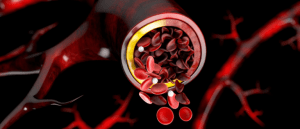Stem cell gene therapy expands the toolbox to tackle sickle cell disease

Scientists have identified another potential gene therapy for sickle cell disease, which has had success at the early stages of a clinical trial.
A research team led by James LaBelle at the University of Chicago (IL, USA) has published encouraging results from a Phase I/II clinical trial using a new stem cell gene therapy to treat sickle cell disease (SCD). These results bring patients with SCD closer to a curative alternative to bone marrow transplants.
SCD is an inherited disorder that is characterized by mutations in the hemaglobin subunit beta (HBB) gene, which under hypoxic conditions produce conformational changes in the β-globin subunits of adult hemoglobin. This causes red blood cells to be shaped like a sickle rather than a disk and leads to painful blockages, known as vaso-occlusion, and progressive organ damage. There is currently a lack of treatment options for SCD, which is restricted to intensive bone marrow transplants from siblings or genetically matched donors.
In this study, LaBelle’s team built on the knowledge that elevated levels of fetal hemoglobin in red blood cells protect against the adverse effects of SCD by replacing deformed adult hemoglobin. They used CRISPR-Cas9 gene-edited hematopoietic stem and progenitor cells, called OTQ923, which have disrupted HBG1 and HBG2 gene promoters. In preclinical experiments on immunodeficient mouse models, OTQ923 progeny was found to increase levels of fetal hemoglobin.
Prime editing as an tool to tackle for sickle cell disease
Research shows that the mutation that causes sickle cell disease could be corrected in hematopoietic stem and progenitor cells, providing a potentially curative approach.
In the Phase I/II clinical study, participants with severe SCD received their own CRISPR-Cas9 edited stem cells as a therapeutic infusion. This resulted in greater levels of fetal hemoglobin within red blood cells and participants reported a decrease in vaso-occlusive events.
Long-term follow-up will be needed to assess the effectiveness of this gene therapy, but these results are promising and contribute to the growing understanding that gene therapies will be a significant tool in the alleviation of SCD and other genetic disorders.
This study is not the first to utilize CRISPR-Cas9 for a SCD gene therapy but is the first to target this genetic locus and utilize cryopreserved stem cells, whilst other studies have used lentiviruses.
“The biggest take-home message is that there are now more potentially curative therapies for SCD than ever before that lie outside of using someone else’s stem cells, which can bring a host of other complications,” commented LaBelle. “The data from this trial supports bringing on similar gene therapies for SCD and for other bone marrow-derived diseases.”


